
1. Objectives: the RADAR’06 sea trial fulfills the generic
objectives of the RADAR project (contract FCT POCTI/CTA/47719/2002)
namelly,
In particular the RADAR’06 sea trial follows under task 3 of RADAR
project and acoustic data acquisition , concurrent oceanographic data
tu support tasks 1 and 4 of the technical annex of the project.
2. Means to be employed a board NRP Auriga: 2 AOB's with 16
hydrophones, CTD, Lubell 1424HP acoustic source, 3 thermistor chains, 3
ADCPs.

3. Test area:
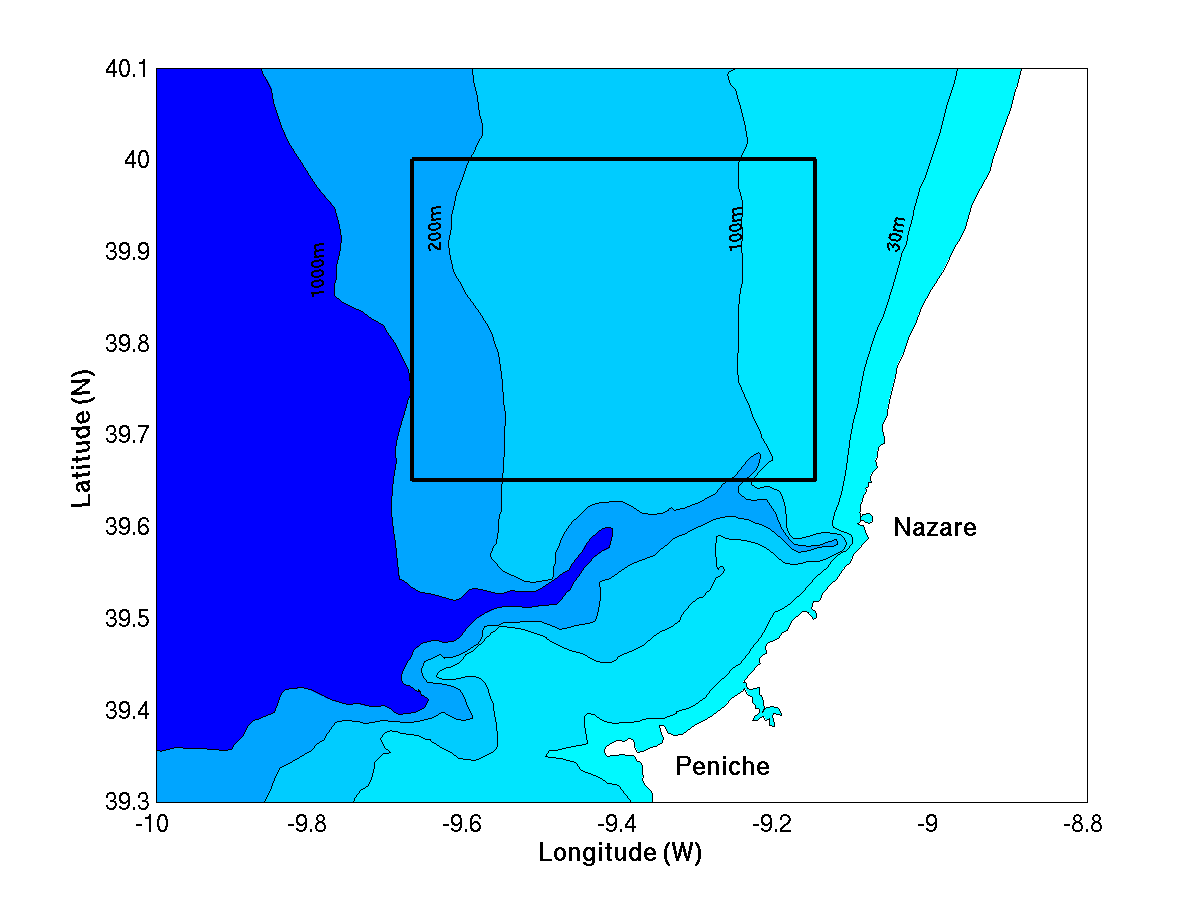
4. Operations day by day:
Thursday 6/July - leave SiPLAB with 2 vehicles and equipment
at 14:00; arrive at port of Figueira da Foz at 19:00; unload equipment
from van and load aboard NRP Auriga; start installation of
communications mast, base station and heavy computation cluster
computers.
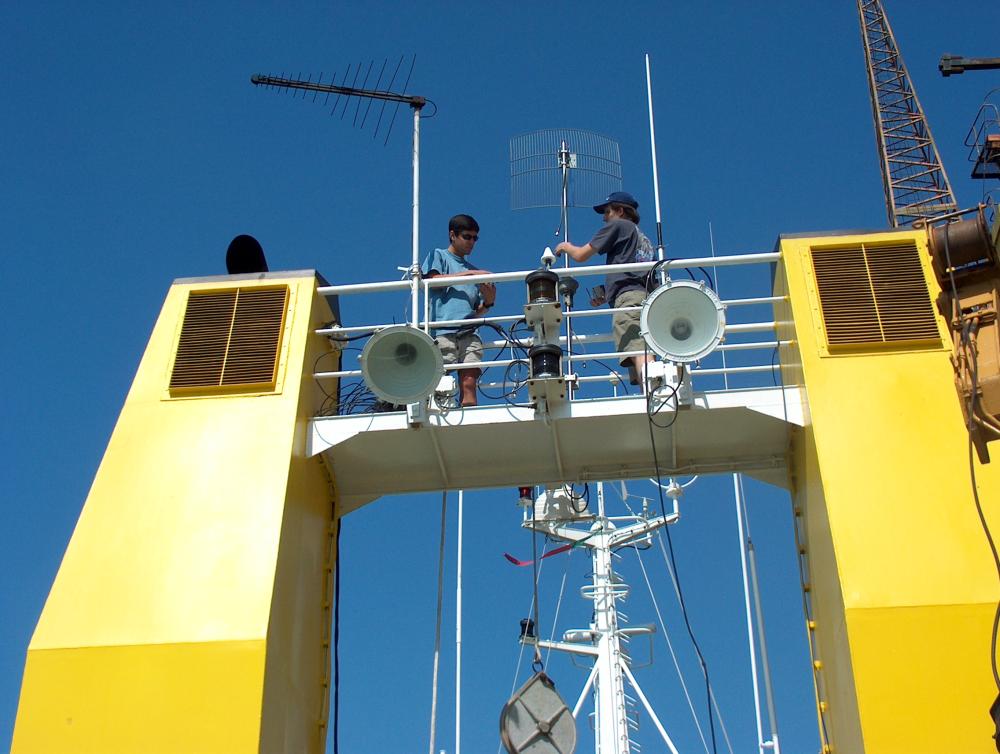 |
Friday 7/July - continue equipment installation and configuration; AOB2 deck testing; at sunset IH CTD finally arrives and is embarked and secured; meteo forecast for saturday July 8th is 2m wave height and 20 knots wind out of Figueira da Foz; NRP Auriga master takes the decision to not go out on saturday. |
Saturday 8/July - just wait;
Sunday 9/july - left port of
Figueira da Foz at 06:30 and went straight out to the west; at 09:30
approximately 20 nm out of port, 1.5 to 2 m wave height with 15 knots;
ship rolling very unconfortable for working or navigating; maneuvering
obliged to keep ship upwind/wave constantly at least at 0.5/1 knot
speed. Forecast saying that wind should get fresher in the afternoon at
about 20 kn wind and 2 to 2.5 m wave height. 12:30 - return to port.
Monday 10/july - left port of
Figueira da Foz at 07:30 and went to southwest to the working area;
covered skies but 0.5 m wave height and 5 knots wind;
10:30 reached position for
work; start deploying AOB2-002 through the ships' stern A-frame,
array first and then buoy, ship was keeping about 1 knot ahead in order
to keep hydrophone array clear from propellers; when the buoy hits the
water array is pulling heavily on buoy's bottom and buoy is horizontal:
mast hits badly the ship's hull; buoy is released.
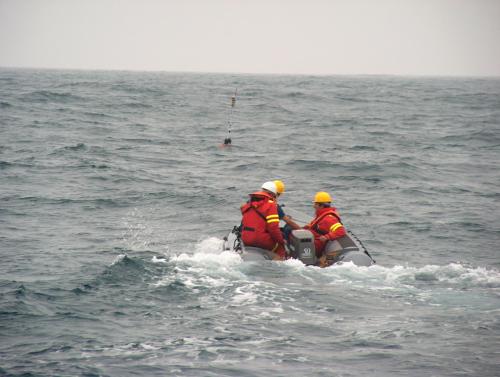 |
11:00 buoy does not
communicates and decision is taken to deploy the workboat for
approaching the buoy (photo to the left). |
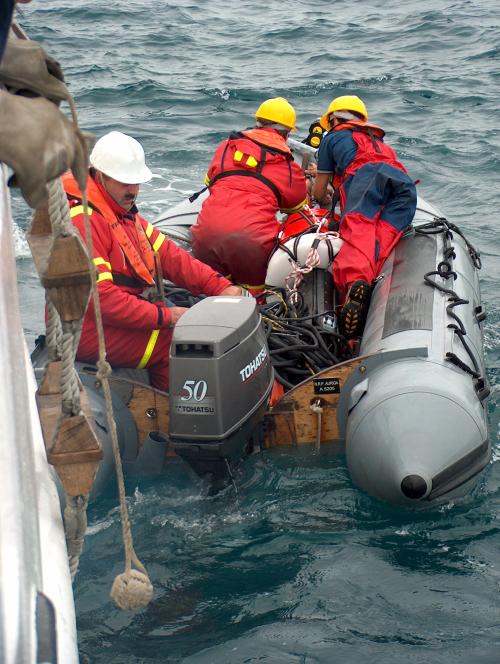 |
11:30 after shunting
the water sensor the buoy still does not communicate and decision is
taken to recover the buoy onboard the workboat (photo on the left). |
12:00 - wireless antenna is
found to be broken during deployment and even after antenna replacement
the already shunted water sensor is not working; the water sensor is
found to be in open circuit and eliminated from the circuit and
replaced by bare wires;
12:30 - deployment of
AOB2-001; this time the buoy is deployed by starboard with the crane
and the operation works out very well, smooth and well coordinated by
IH; after a few minutes the buoy is found again to not responding to
base station calls;
|
13:00 - the workboat
is
again deployed and the buoy is checked for its wireless antenna and
water sensor; after shunting the water sensor the buoy is still not on;
at this point the buoy is again recovered on the workboat and taken
onboard; on the deck the buoy still does not work and cables are
checked and found that the battery power cable is (probably) not well
connected - after reconnection the buoy instantly works and responds to
all commands; |
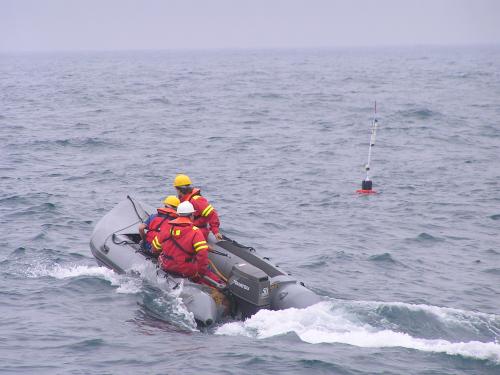 |
14:00 - decision is taken to
redeploy AOB2-002 with the water sensor eliminated and therefore
powered from the deck;
14:30 - the buoy is in the water, turned on and communicating;
the HP1424 sound source is deployed from starboard side using the crane
and maintained at approximately 10 m depth (left photo below);
transmissions start; this time signals are received on the array
hydrophones but strongly saturate; several alternatives are tested:
increase dynamics, reduce signal power, etc...It seems that saturation
happens at the pre-amplifier level at 3.8 Veff and is not signal
dependent; saturation slightly varies from hydrophone to hydrophone;
once in a while between two saturations a piece of LFM can be clearly
seen (photo below). Decision is taken to recover the buoy and the
HP1424 sound source.
|
||||
The
RADAR'06 team (from left to right): Nelson, Fred, Celestino, Sergio
and Cristiano (NRP Auriga behind)
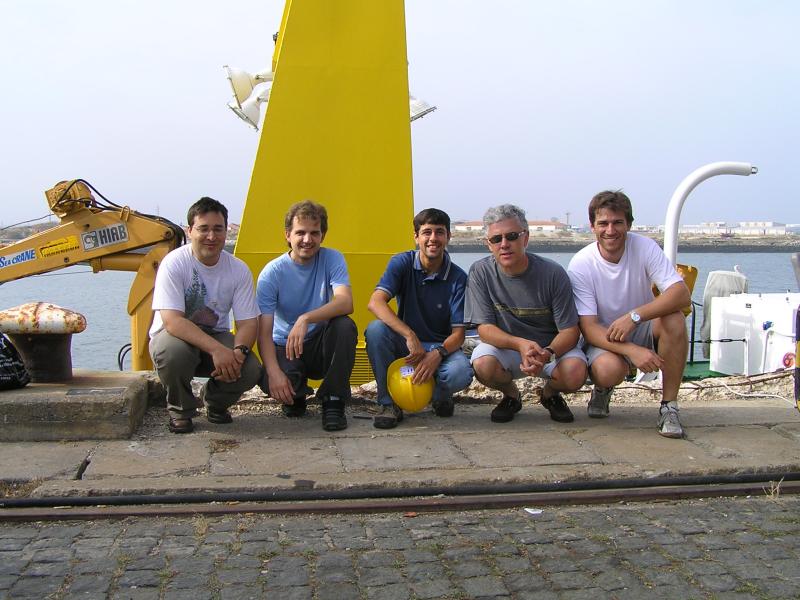
Test plan: version 1.1 (28jun06) here
Cruise Report: here